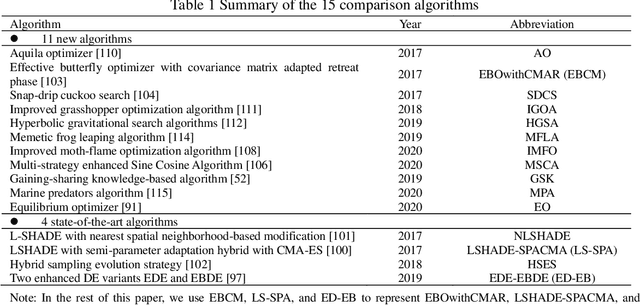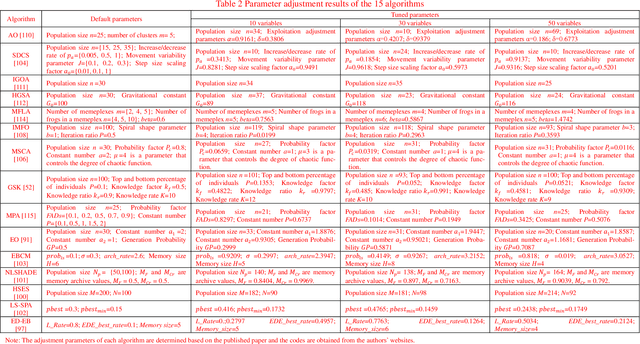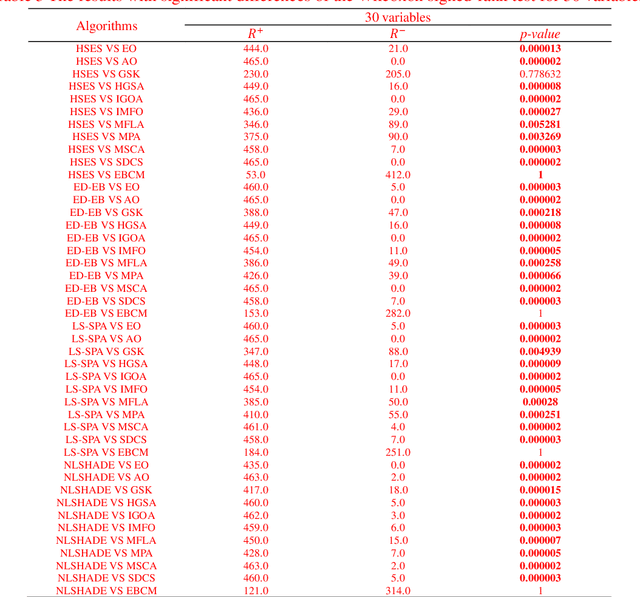Aijuan Song
REMS: a unified solution representation, problem modeling and metaheuristic algorithm design for general combinatorial optimization problems
May 21, 2025Abstract:Combinatorial optimization problems (COPs) with discrete variables and finite search space are critical across numerous fields, and solving them in metaheuristic algorithms is popular. However, addressing a specific COP typically requires developing a tailored and handcrafted algorithm. Even minor adjustments, such as constraint changes, may necessitate algorithm redevelopment. Therefore, establishing a framework for formulating diverse COPs into a unified paradigm and designing reusable metaheuristic algorithms is valuable. A COP can be typically viewed as the process of giving resources to perform specific tasks, subjecting to given constraints. Motivated by this, a resource-centered modeling and solving framework (REMS) is introduced for the first time. We first extract and define resources and tasks from a COP. Subsequently, given predetermined resources, the solution structure is unified as assigning tasks to resources, from which variables, objectives, and constraints can be derived and a problem model is constructed. To solve the modeled COPs, several fundamental operators are designed based on the unified solution structure, including the initial solution, neighborhood structure, destruction and repair, crossover, and ranking. These operators enable the development of various metaheuristic algorithms. Specially, 4 single-point-based algorithms and 1 population-based algorithm are configured herein. Experiments on 10 COPs, covering routing, location, loading, assignment, scheduling, and graph coloring problems, show that REMS can model these COPs within the unified paradigm and effectively solve them with the designed metaheuristic algorithms. Furthermore, REMS is more competitive than GUROBI and SCIP in tackling large-scale instances and complex COPs, and outperforms OR-TOOLS on several challenging COPs.
Performance assessment and exhaustive listing of 500+ nature inspired metaheuristic algorithms
Dec 19, 2022



Abstract:Metaheuristics are popularly used in various fields, and they have attracted much attention in the scientific and industrial communities. In recent years, the number of new metaheuristic names has been continuously growing. Generally, the inventors attribute the novelties of these new algorithms to inspirations from either biology, human behaviors, physics, or other phenomena. In addition, these new algorithms, compared against basic versions of other metaheuristics using classical benchmark problems without shift/rotation, show competitive performances. In this study, we exhaustively tabulate more than 500 metaheuristics. To comparatively evaluate the performance of the recent competitive variants and newly proposed metaheuristics, 11 newly proposed metaheuristics and 4 variants of established metaheuristics are comprehensively compared on the CEC2017 benchmark suite. In addition, whether these algorithms have a search bias to the center of the search space is investigated. The results show that the performance of the newly proposed EBCM (effective butterfly optimizer with covariance matrix adaptation) algorithm performs comparably to the 4 well performing variants of the established metaheuristics and possesses similar properties and behaviors, such as convergence, diversity, exploration and exploitation trade-offs, in many aspects. The performance of all 15 of the algorithms is likely to deteriorate due to certain transformations, while the 4 state-of-the-art metaheuristics are less affected by transformations such as the shifting of the global optimal point away from the center of the search space. It should be noted that, except EBCM, the other 10 new algorithms proposed mostly during 2019-2020 are inferior to the well performing 2017 variants of differential evolution and evolution strategy in terms of convergence speed and global search ability on CEC 2017 functions.
Integrating Variable Reduction Strategy with Evolutionary Algorithm for Solving Nonlinear Equations Systems
Jul 13, 2020Abstract:Nonlinear equations systems (NESs) are widely used in real-world problems while they are also difficult to solve due to their characteristics of nonlinearity and multiple roots. Evolutionary algorithm (EA) is one of the methods for solving NESs, given their global search capability and an ability to locate multiple roots of a NES simultaneously within one run. Currently, the majority of research on using EAs to solve NESs focuses on transformation techniques and improving the performance of the used EAs. By contrast, the problem domain knowledge of NESs is particularly investigated in this study, using which we propose to incorporate the variable reduction strategy (VRS) into EAs to solve NESs. VRS makes full use of the systems of expressing a NES and uses some variables (i.e., core variable) to represent other variables (i.e., reduced variables) through the variable relationships existing in the equation systems. It enables to reduce partial variables and equations and shrink the decision space, thereby reducing the complexity of the problem and improving the search efficiency of the EAs. To test the effectiveness of VRS in dealing with NESs, this paper integrates VRS into two existing state-of-the-art EA methods (i.e., MONES and DRJADE), respectively. Experimental results show that, with the assistance of VRS, the EA methods can significantly produce better results than the original methods and other compared methods.
 Add to Chrome
Add to Chrome Add to Firefox
Add to Firefox Add to Edge
Add to Edge